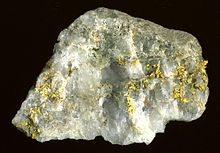 | |
| Agency overview | |
|---|---|
| Formed | July 2, 1965 |
| Headquarters | Washington, D.C., U.S. |
| Employees | 1,968 (FY18) |
| Annual budget | $379,500,000 (FY18) |
| Agency executives |
|
| Website | www.eeoc.gov |
The U.S. Equal Employment Opportunity Commission (EEOC) is a federal agency that administers and enforces civil rights laws against workplace discrimination. The EEOC investigates discrimination complaints based on an individual's race, children, national origin, religion, sex, age, disability, sexual orientation, gender identity, genetic information, and retaliation for reporting, participating in, and/or opposing a discriminatory practice.
History
On March 6, 1961, President John F. Kennedy signed Executive Order 10925,
which required government contractors to "take affirmative action to
ensure that applicants are employed and that employees are treated
during employment without regard to their race, creed, color, or
national origin." It established the President's Committee on Equal Employment Opportunity, which then Vice President Lyndon Johnson was appointed to head. This was the forerunner of the EEOC.
The EEOC was established on July 2, 1965; its mandate is specified under Title VII of the Civil Rights Act of 1964, the Age Discrimination in Employment Act of 1967 (ADEA), the Rehabilitation Act of 1973, the Americans with Disabilities Act (ADA) of 1990, and the ADA Amendments Act of 2008. The EEOC's first complainants were female flight attendants.
However, the EEOC at first ignored sex discrimination complaints, and
the prohibition against sex discrimination in employment went unenforced
for the next few years. One EEOC director called the prohibition "a fluke... conceived out of wedlock."
All Commission seats and the post of general counsel to the
commission are filled by the US President, subject to confirmation by
the Senate. Stuart J. Ishimaru, a Commissioner who was confirmed in 2003 and 2006, served as Acting Chair of the Commission from January 20, 2009 until December 22, 2010, when the Senate confirmed Jacqueline Berrien to be the chairwoman. She had been nominated as chairwoman by President Barack Obama in July 2009. In September 2009, Obama chose Chai Feldblum to fill another vacant seat.
On March 27, 2010, President Obama made recess appointments of three Commission posts: Berrien, Feldblum, and Victoria Lipnic. With the appointments, the Commission had its full five Commissioners: Ishimaru, Berrien, Feldblum, Lipnic, and Constance Barker, who was confirmed by the Senate in 2008 to be a Commissioner. President Obama also made a recess appointment of P. David Lopez to be the EEOC's General Counsel.
On December 22, 2010, the Senate gave full confirmation to
Berrien, Feldblum, Lipnic, and Lopez. In 2014, President Obama
renominated Lopez and he was reconfirmed by the Senate the same year.
In 2011, the Commission included "sex-stereotyping" of lesbian,
gay, and bisexual individuals, as a form of sex discrimination illegal
under Title VII of the Civil Rights Act of 1964. In 2012, the Commission expanded protection provided by Title VII to transgender status and gender identity.
After the departure of Ishimaru, the commission returned to its
full five commissioners on April 25, 2013, with the Senate confirmation
of Jenny Yang.
In 2015, it concluded that for Title VII, sex discrimination includes discrimination based on sexual orientation.
However, the rulings, while persuasive, are not binding on courts
and would need to be addressed by the Supreme Court for a final
decision. The Commission also mediates and settles thousands of
discrimination complaints each year prior to their investigation. The
EEOC is also empowered to file civil discrimination suits against
employers on behalf of alleged victims and to adjudicate claims of
discrimination brought against federal agencies.
Staffing, workload, and backlog
In 1975, when the backlog reached more than 100,000 charges to be investigated, President Gerald Ford's full requested budget of $62 million was approved. A "Backlog Unit" was created in Philadelphia in 1978 to resolve the thousands of federal equal employment complaints inherited from the Civil Service Commission. In 1980, Eleanor Holmes Norton
began re-characterizing the backlog cases as "workload" in her reports
to Congress, thus fulfilling her promise to eliminate the backlog.
In June 2006, civil rights and labor union advocates publicly
complained that the effectiveness of the EEOC was being undermined by
budget and staff cuts and the outsourcing of complaint screening to a
private contractor whose workers were poorly trained. In 2006, a partial
budget freeze prevented the agency from filling vacant jobs, and its
staff had shrunk by nearly 20 percent from 2001. A Bush administration
official stated that the cuts had been made because it was necessary to
direct more money to defense and homeland security.
By 2008, the EEOC had lost 25 percent of its staff over the previous
eight years, including investigators and lawyers who handle the cases.
The number of complaints to investigate grew to 95,400 in fiscal 2008,
up 26 percent from 2006.
Although full-time staffing of the EEOC was cut between 2002 and
2006, Congress increased the commission's budget during that period, as
it has almost every year since 1980. The budget was $303 million in
fiscal year 2001 to $327 million in fiscal year 2006.
The outsourcing to Pearson Government Solutions in Kansas cost
the agency $4.9 million and was called a "huge waste of money" by the
president of the EEOC employees' union in 2006.
The EEOC uses monetary fines as the primary form of deterrence
and, as the fines have not adjusted for inflation, the backlog of EEOC
cases illustrates a decline in its effectiveness.
Race and ethnicity
The EEOC requires employers to report various information about their employees, in particular their racial/ethnic categories, to prevent discrimination based on race/ethnicity. The definitions used in the report have been different at different times.
In 1997, the Office of Management and Budget gave a Federal Register
Notice, the "Revisions to the Standards for the Classification of
Federal Data on Race and Ethnicity," which defined new racial and ethnic
definitions.
As of September 30, 2007, the EEOC's EEO-1 report must use the new
racial and ethnic definitions in establishing grounds for racial or
ethnic discrimination.
If an employee identifies their ethnicity as "Hispanic or Latino" as
well as a race, the race is not reported in EEO-1, but it is kept as
part of the employment record.
A person's skin color or physical appearance can also be grounds for a case of racial discrimination. Discrimination based on national origin can be grounds for a case on discrimination as well.
Investigative compliance policy
EEOC
applies an investigative compliance policy when respondents are
uncooperative in providing information during an investigation of a
charge. If a respondent fails to turn over requested information, field
offices are to subpoena the information, file a direct suit on the
merits of a charge, or use the legal principle of adverse inference, which assumes the withheld information is against the respondent.
Increase in disability-based charges
In
2008, disability-based charges handled by the EEOC rose to a record
19,543, up 10.2 percent from the prior year and the highest level since
1995.
That may again be showing that because the EEOC has not adjusted
many of their initial 1991 fines for inflation, the backlog of EEOC
cases illustrates erosion of deterrence.
Home Depot disability discrimination suit
In September 2012, Home Depot agreed to pay $100,000 and furnish other relief to settle a disability discrimination lawsuit filed by the EEOC for the alleged failure to provide reasonable accommodation for a cashier with cancer at its Towson, Maryland, store and for later purportedly firing her because of her condition.
2012 profile
The
U.S. Equal Employment Opportunity Commission (EEOC) announced that it
received 99,412 private sector workplace discrimination charges during
fiscal year 2012, down slightly from the previous year. The year-end
data also show that retaliation (37,836), race (33,512), and sex
discrimination (30,356), which includes allegations of sexual harassment
and pregnancy were the most frequently filed charges.
Additionally, the EEOC achieved a second consecutive year of a
significant reduction in the charge inventory, something not seen since
fiscal year 2002. Due to a concerted effort, the EEOC reduced the
pending inventory of private sector charges by 10 percent from fiscal
year 2011, bringing the inventory level to 70,312. This inventory
reduction is the second consecutive decrease of almost ten percent in
charge inventory. Also this fiscal year, the agency obtained the
largest amount of monetary recovery from private sector and state and
local government employers through its administrative process — $365.4
million.
In fiscal year 2012, the EEOC filed 122 lawsuits, including 86
individual suits, 26 multiple-victim suits, with fewer than 20 victims,
and 10 systemic suits. The EEOC's legal staff resolved 254 lawsuits for a
total monetary recovery of $44.2 million.
EEOC also continued its emphasis on eliminating alleged systemic
patterns of discrimination in the workplace. In fiscal year 2012, EEOC
completed 240 systemic investigations which in part resulted in 46
settlements or conciliation agreements. These settlements, achieved
without litigation, secured 36.2 million dollars for the victims of
unlawful discrimination. In addition, the agency filed 12 systemic
lawsuits in fiscal year 2012.
Overall, the agency secured both monetary and non-monetary
benefits for more than 23,446 people through administrative enforcement
activities – mediation, settlements, conciliations, and withdrawals with
benefits. The number of charges resolved through successful
conciliation, the last step in the EEOC administrative process prior to
litigation, increased by 18 percent over 2011.
Successes
On May 1, 2013, a Davenport, Iowa
jury awarded the U.S. Equal Employment Opportunity Commissission
damages totaling $240 million — the largest verdict in the federal
agency's history — for disability discrimination and severe abuse.
The jury agreed with the EEOC that Hill County Farms, doing
business as Henry's Turkey Service subjected a group of 32 men with
intellectual disabilities to severe abuse and discrimination for a
period between 2007 and 2009, after 20 years of similar mistreatment. This victory received international attention and was profiled in the New York Times.
On June 1, 2015, the U.S. Supreme Court held in an 8-1 decision
written by Justice Antonin Scalia that an employer may not refuse to
hire an applicant if the employer was motivated by avoiding the need to
accommodate a religious practice. Such behavior violates the prohibition
on religious discrimination contained in Title VII of the Civil Rights
Act of 1964.
EEOC General Counsel David Lopez hailed the decision. "At its
root, this case is about defending the quintessentially American
principles of religious freedom and tolerance," Lopez said. "This
decision is a victory for our increasingly diverse society and we
applaud Samantha Elauf's courage and tenacity in pursuing this matter.”
Criticism
Some
employment-law professionals criticized the agency after it issued
advice that requiring a high school diploma from job applicants could
violate the Americans with Disabilities Act.
The advice letter stated that the longtime lowest common denominator of
employee screening must be "job-related for the position in question
and consistent with business necessity." A Ballard Spahr
lawyer suggested, "There will be less incentive for the general public
to obtain a high school diploma if many employers eliminate that
requirement for job applicants in their workplace."
The EEOC has been criticized for alleged heavy-handed tactics in their 1980 lawsuit against retailer Sears, Roebuck & Co.
Based on a statistical analysis of personnel and promotions, EEOC
argued that Sears both was systematically excluding women from
high-earning positions in commission sales and was paying female management lower wages than male management. Sears, represented by lawyer Charles Morgan, Jr.,
counter-argued that the company had encouraged female applicants for
sales and management, but women preferred lower-paying positions with
more stable daytime working hours, as compared to commission sales,
which demanded evening and weekend shifts and featured
drastically-varying paychecks, depending on the numbers of sales in a
given pay period. In 1986, the court ruled in favor of Sears on all
counts and noted that the EEOC had neither produced a single witness who
alleged discrimination nor identified any Sears policy that
discriminated against women.
In a 2011 ruling against the EEOC, Judge Loretta A. Preska declared that It relied too heavily on anecdotal claims rather than on hard data, in a lawsuit against Bloomberg, L.P. that alleged discrimination against pregnant employees. In a ruling described in the New York Times
as "strongly worded," Preska wrote, "the law does not mandate
'work-life balance' and added that while Bloomberg had expected high
levels of dedication from employees, the company did not treat women who
took pregnancy leave differently from those who took leave for other
reasons.







